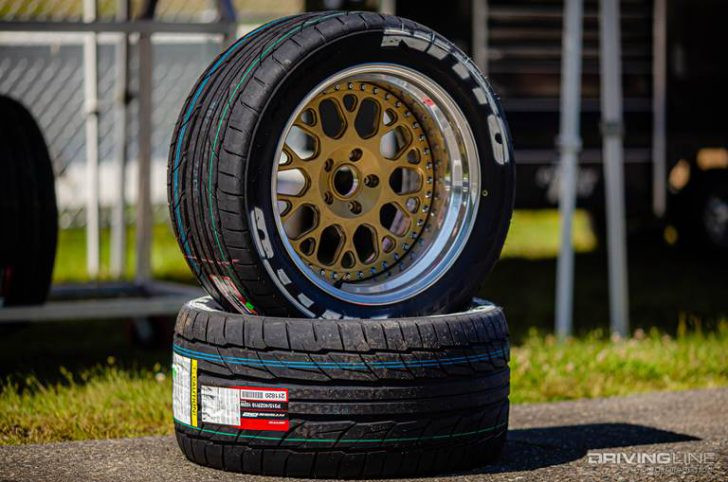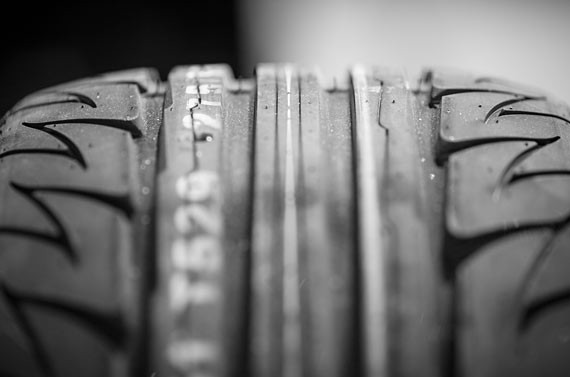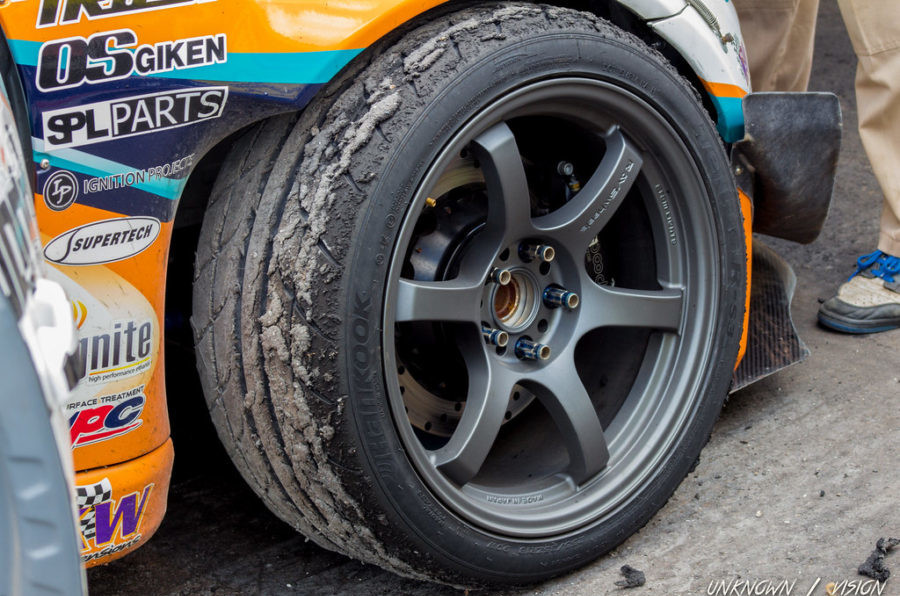

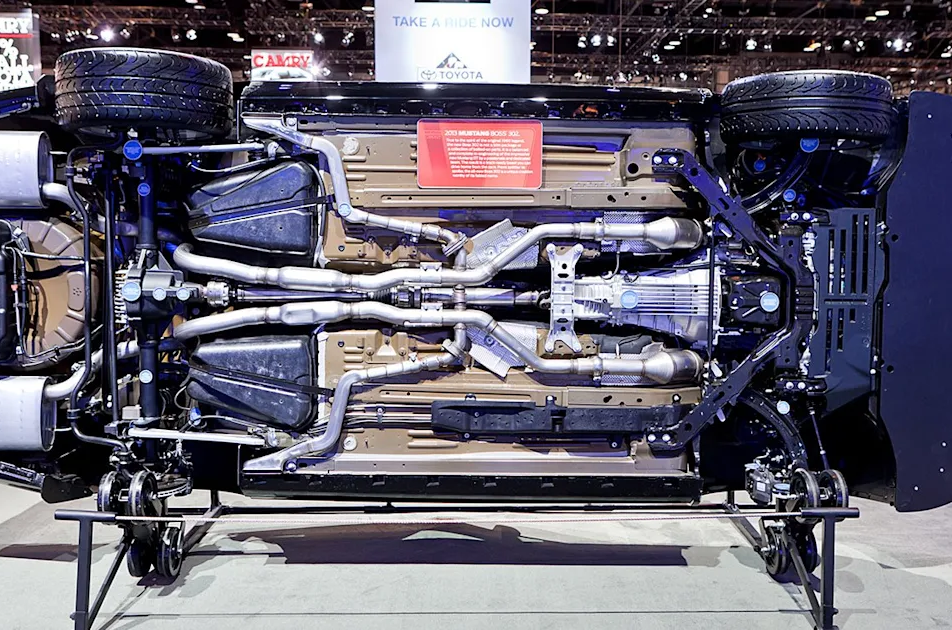
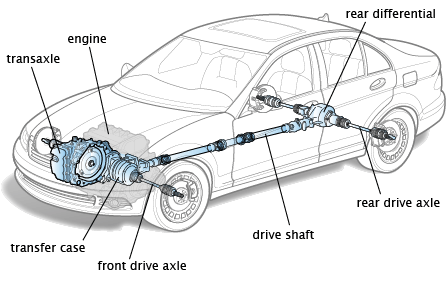
A mechanical limited slip differential (LSD) is considered essential for drifting. Drifting with an open or viscous differential in a sustained slide generally yields relatively less impressive results. All other modifications are secondary to the LSD.
The preferred form of LSD for drifting is the clutch type, in "two-way" form, for its consistent and aggressive lockup behavior under both acceleration and deceleration. Some drift cars use a spool "differential", which actually has no differential action at all — the wheels are locked to each other. Drifters on a budget may use a welded differential, where the side gears are welded to give the same effect as a spool. This makes it easier to break rear traction, because it reduces maximum traction in all situations except traveling in a straight line. Welded differentials have an inherent risk involved: due to the tremendous amount of internal stress, the welds may fail and the differential completely lock up leaving the rear wheels immobilized. Helical torque-sensing differentials such as the Torsen or Quaife (available on cars in certain stock trims such as the S15, FD3S, MX-5, JZA80, and UZZ3x) are also adequate. It is common for drifters to change the final gear ratio depending on the type of track layout.
The clutches on drift cars tend to be very tough ceramic-brass button or multiple-plate varieties for durability, as well as to allow rapid "clutch kick" techniques to upset the grip of the rear wheels. Gearbox and engine mounts are often replaced with urethane or aluminum mounts, and dampers are added to control the violent motion of the engine and gearbox under these conditions. The driveshafts are often replaced with carbon fiber drive shafts, as they offer the highest rotational mass savings, are stronger than alternative metals, and flexible enough to absorb and dissipate vibrations, thus easing the load on the gearbox as well as the rest of the drivetrain.
Gear sets may be replaced with closer ratios to keep the engine in the power band, or, on some cars that produce enough power and torque to four-gear transmissions similar to the ones used in NASCAR (such as the Andrews four-speed dog box that Vaughn Gittin Jr. ran in his 2016 Mustang) with more open-ratio gears, this limits the number of shifts the driver has to do during their run. These may be coarser dog engagement straight cut gears instead of synchronised helical gears, for durability and faster shifting at the expense of noise and refinement. Wealthier drifters may use sequential gearboxes to make gear selection easier and faster, while sequential shift lever adapters can be used to make shifts easier without increasing shift time.



Because of the high centrifugal forces encountered during drifting, drivers are usually retained by a racing seat and five-point harness. This allows the hands to merely turn the wheel, instead of bracing the body in the seat. The same applies for the feet, which are free to move rapidly between clutch, brake and accelerator pedals. The steering wheel is usually relatively small, dished, and perfectly round, so that it can be released and allowed to spin in the driver's hands as the caster returns the front wheels to center. The locking knob on the hand brake is usually replaced with a spin turn knob; this stops the hand brake locking on when pulled. Nearly all drivers move the hand brake location or add an extra hydraulic hand brake actuator for greater braking force. Additional gauges are used to monitor boost levels, oil pressure and temperature, intake and coolant temperatures, and air-fuel ratio, among other data. Some drivers, especially in larger cars, move the seating position for a better weight distribution, such as Daigo Saito and his 2014 JZX100 Mk.II Chaser.
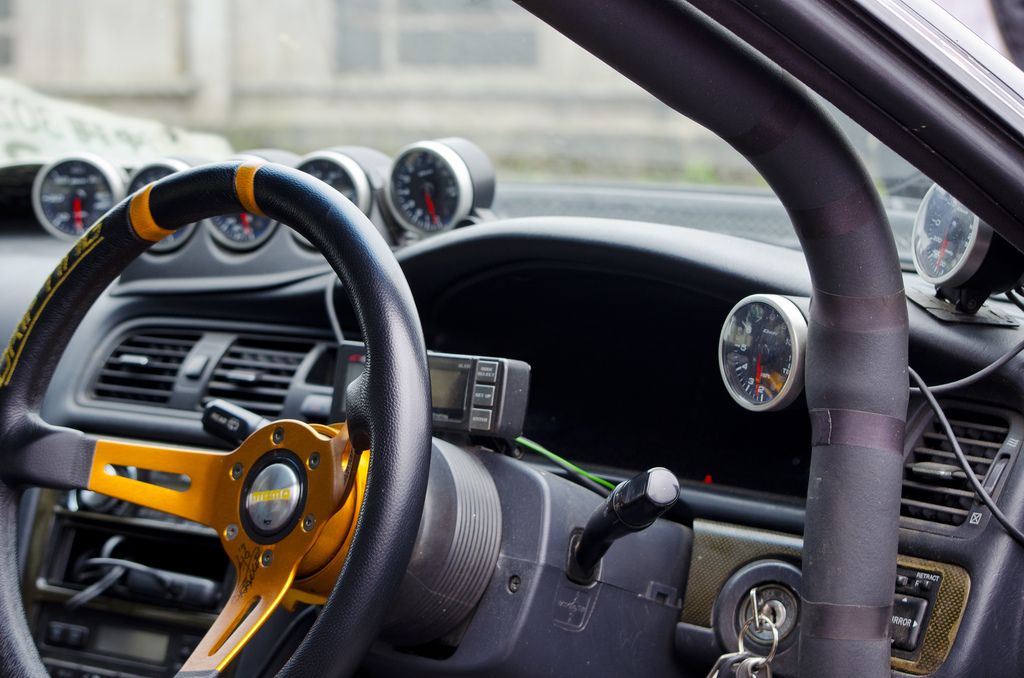
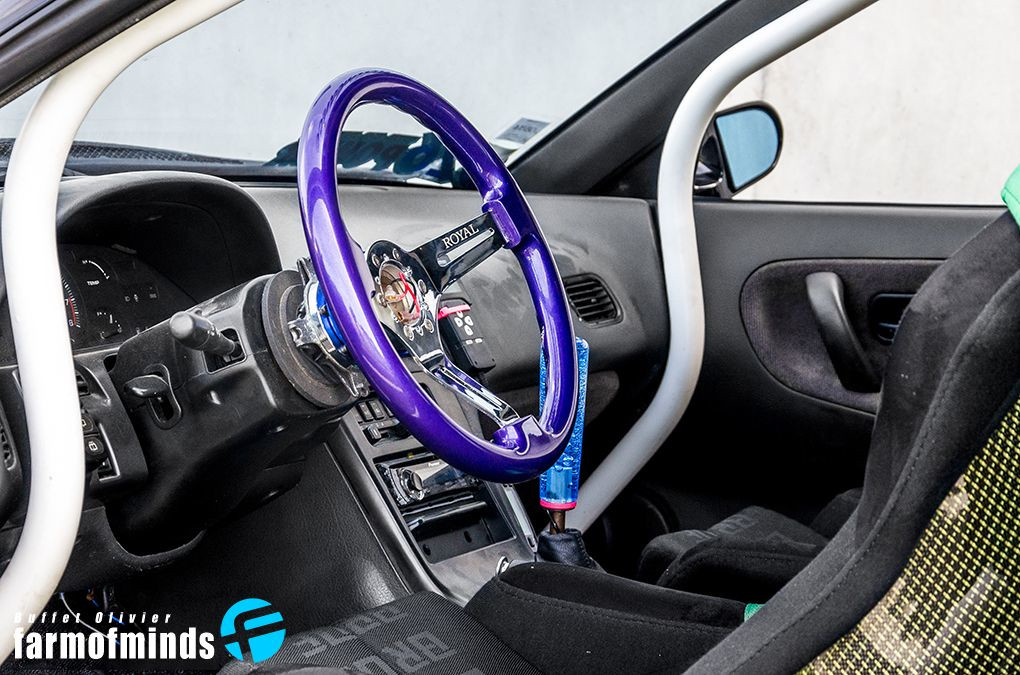
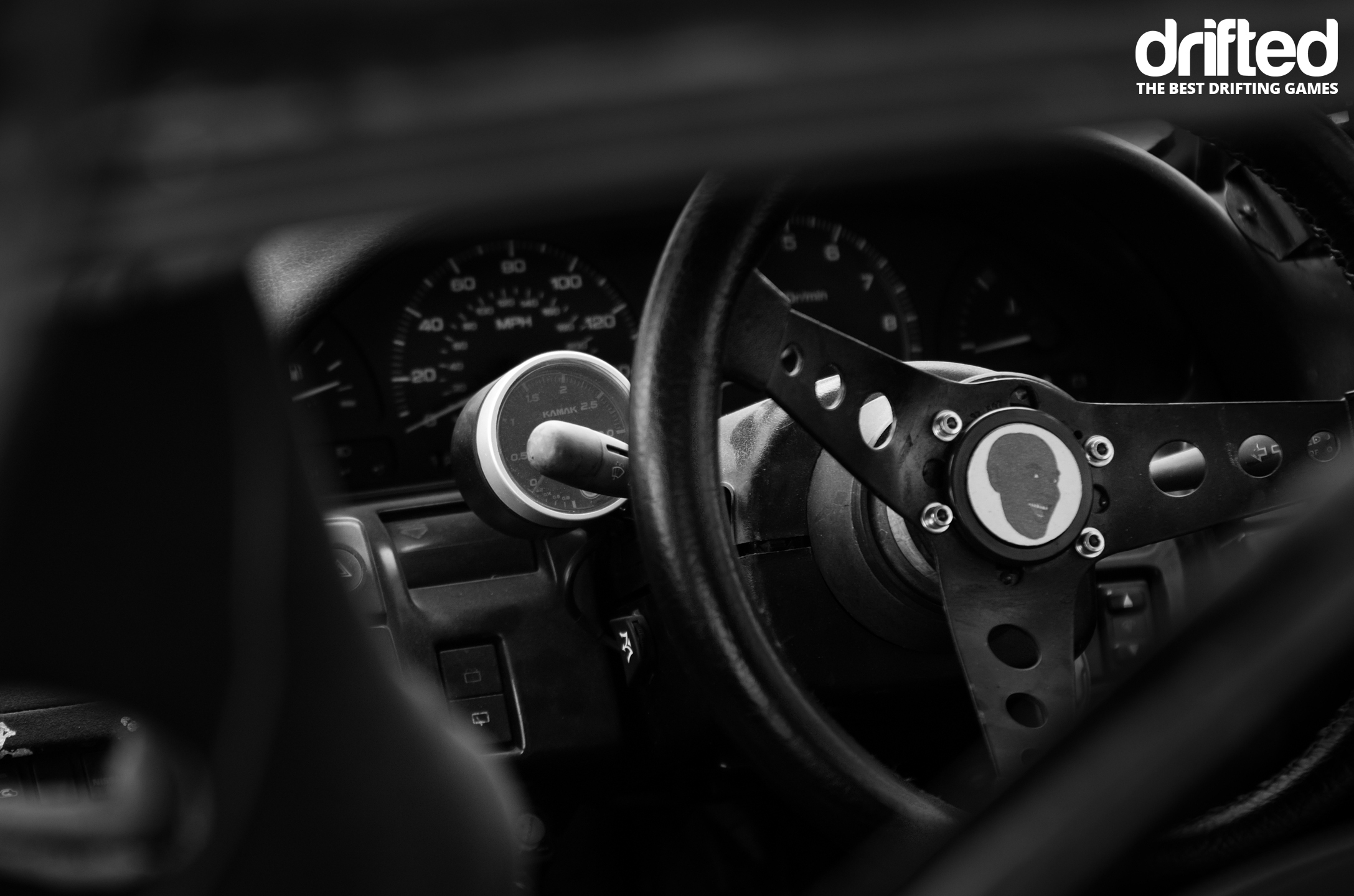
In the United States, competitive drifters are required to run USDOT-approved (road-legal) tires similar to racing slicks in rubber composition, but with shallow treads included. This is permitted, with the exception of some major championships including D1GP and Formula Drift, which only permit commercially available tires that are approved by the sanctioning body. Professional drifting has come to the point where grip is tuned into cars to be defeated. It makes for a faster drift necessary in the current professional climate. Tires typically used by drifters are around the DOT tread wear rating of 200. Examples include the Hankook Ventus RS-3, Falken Azenis RT615K, Nitto NT05, Yokohama ADVAN Neova AD08R, and Achilles Radial 123s. Some other companies from Asia have also started developing their technology through sponsoring professional drivers. These companies include Nankang, Westlake and Zestino. Tires are often modified with lettering to give them a more customized look.
